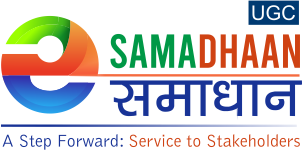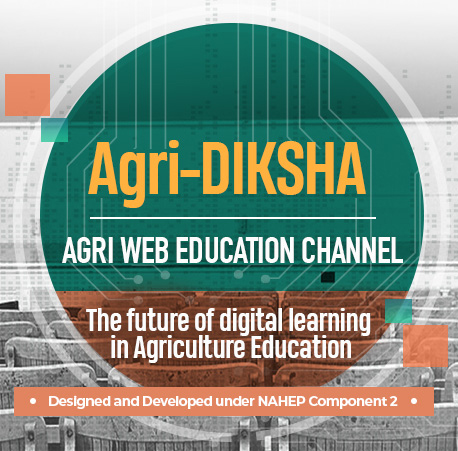Regional Research Centre, Amravati
|
|
|
|
|
|
|
Faculty Information |
|
|
|
|
|
|
|
|
|
|
|
|
|
|
|
|
|
|
|
|
|
|
||
|
|
|
|
|
|
|
About Centre
The center was started as an experimental farm in 1953, under the Community Development Programme. Later on, some research schemes on crops like cotton, sorghum, groundnut, etc. were started by ICAR, New Delhi. In 1958, these schemes were amalgamated to form a Project for Intensification of Regional Research on Cotton, Oilseeds and Millets (PIRRCOM), which continued till it was handed over to the State Department of Agriculture in 1965. The same was then transferred to the State Agriculture University in 1968 and subsequently to Dr. Panjabrao Deshmukh Krishi Vidyapeeth, Akola in 1969.
Agro Climatic Information
Amravati is located between 21o46′ North to 20o 32′ to North and 78o 27′ East to 76o 37′, at an altitude of 365 meters above the mean sea level. It comes under Assured Rainfall Zone. Rains are mostly received from South-West monsoon during June to October with mean annual precipitation 851.40 mm of which is generally received in avg. 42 rainy days. Amravati faces extreme variations in temperature with very hot summer and very cold winters.
Infrastructure
|
Details |
Area in Ha. |
|
|---|---|---|
|
Gross total land
|
151.82 | |
| Non cultivable area | 15.82 | |
| 1 | Area under road, building | 11.00 |
| 2 | Land allotted bye-pass road | 4.67 |
| 3 | Land under compost pit | 0.15 |
| Cultivable area | 136.00 | |
| 1 | Land under plantation | 27.13 |
| 2 | Actual area under cultivation | 69.27 |
| 3 | Fallow land kept for Rabi | 7.60 |
| 4 | Fallow land brought under cultivation | 22.85 |
| 5 | Fallow land | 9.15 |
Irrigation facilities
The center is having seven wells and two bore wells, out of seven wells, three wells have perennial source of sufficient water enough to irrigate about 25 ha in Rabi season. Three farm ponds, Rain gauges seven in number, Sprinkler set-6 no., 2 set of Drip system, 12 Electric Pump, underground pipelines-5003.5 meter and one tractor trolley tanker facility available at center.
Farm Power
The farm is having two tractors with tractor drawn implements supported twelve bullocks and miscellaneous equipments.
Lab facility
This center having laboratory facility to carry out experimental aspect. This include, Hot air oven, Autoclave, Rapid Plant Stress Screening Device, Germinator, Canopy Analyzer, Image Analyzer with Microscope Set up, Auto Kjeldhal System, Deep freezer, Glassware’s, Chemicals etc.
Mandate
-
To develop economically viable production and protection technologies to augment the production.
-
Development of soybean varieties with resistance/tolerant for foremost biotic and a-biotic stresses.
-
Development of production technology of soybean for higher monetary returns.
-
Soybean seed production (Breeder, Truthful) and other crops like Gr. Nut, Gram, and Pigeon pea etc.
-
To generate farm income for strengthening research station activity
-
Extension activities related to soybean and other crops promotion and production.
Research Activities and Achievements
Research and Farm Activities
The Centre is mainly involved in multidisciplinary soybean research including Soybean seed production and executing other crop breeder’s seed production programme e.g. G-nut, Cotton, Pigeon pea, Udid, Wheat, Gram, Safflower etc. The centre is also implemented Nursery and plantation programme as per the Mega Seed Project, ICAR, New Delhi. Multilocation varietal trial of cotton, pulses and oilseeds crops was conducted at this research station during Kharif, Rabi and Summer seasons. Research trial of AICRP on Soybean viz., Initial Varietal Trial, Advanced Varietal Trial I and II was conducted at this research station. Center also developed ideal organic farm in collaboration with State Agriculture Department, Amravati.
Achievements
-
This centre has released two soybean varieties viz., TAMS-38 and TAMS-98-21.
-
In 2009,this center affirmed as Main Center for Soybean Research by All India Coordinated Research Project on Soybean, DSR( ICAR, New, Delhi), Indore(MP)
-
The center has awarded by 3rd prize in AGROTECH-2009 and 2nd prize in Krishi Melawa 2010 held at Gondia and Amravati respectively.
Research Recommendations
-
It is recommended that in Cotton + Soybean intercropping an early maturing soybean variety (75 days) should be used.
-
Foliar application of 2% urea at 50 and 70 DAS along with RDF is recommended to soybean for getting highest yields and maximum benefits from soybean.
-
In rain fed condition three tier intercropping system Soybean + Sorghum + Pigeon pea (6:2:1) or (9:2:1) row spacing is recommended for meet out the demand of food, feed and pulse grain of farmer and also for getting maximum returns.
-
Seed inoculation of bio-fertilizers (Rhizobium + PSB, 20g each/ kg seed) + 50% RDF/ha is recommended for the intercropping system of Pigeon pea + Soybean (1:2) for higher economic returns.
-
An integrated weed management in intercropping of Pigeon pea + soybean (1:2) indicated the highest Pigeon pea equivalent yield in Pendimethalin @ PE 0.75 ai kg/ha + one hand weeding at 40 DAS
-
Soil application of Phorate 10 G @ 10kg/ha at the time of sowing or foliar spraying with Triazophos 40 EC (0.04%); Chlopyriphos 20EC (0.04%) or Acephate 75sp (0.07%) is recommended on noticing the incidence for the management of Stem fly on soybean.
-
For the effective management of leaf defoliators of soybean and higher yield, two sprayings at the interval of 15 days with NSE 5% followed by Quinolphos 0.05% or Beauveria bassiana 1Lit/ha followed by NSE 5% or Azadirachtin 1500ppm 2.5ml/lit followed by NSE 5% are recommended, from the initiation of the pest.
Transfer of Technology
-
Organised Dr. PDKV Krushak Vigyan Manch Programme on 3rd Saturday of every month regularly at center.
-
Organized training programme for farmers and generated information on latest technology developed by University.
-
Technology on crop production and plant protection disseminated through various State Department of Agriculture training from Agrilcultural staff and extension worker and also through farmers training at taluka and village places.
-
Technology transferred also through participating of scientist in Kharif, Rabi Krushi Melawa and also by arranging stall in various agri-exhibition and field demonstration day at center farm.
-
Publishing popular articles through various new papers and magazines.
-
Also giving diagnostic field visit to the cultivator’s field.
Publications
Published so many news articles regarding awareness of pest and disease situation, management, soybean seed production techniques and improved cultivation practices of soybean.
Contact Information
Head
Regional Research Center (Dr. PDKV)
Morshi Road, Amravati-444603
Phone- (Office)- 0721-2663076
e-mail-rrc_amt@rediffmail.com OR rrc_amt25@yahho.com






 Krishikosh Repository
Krishikosh Repository

